Low-impact sewage treatment - introduction
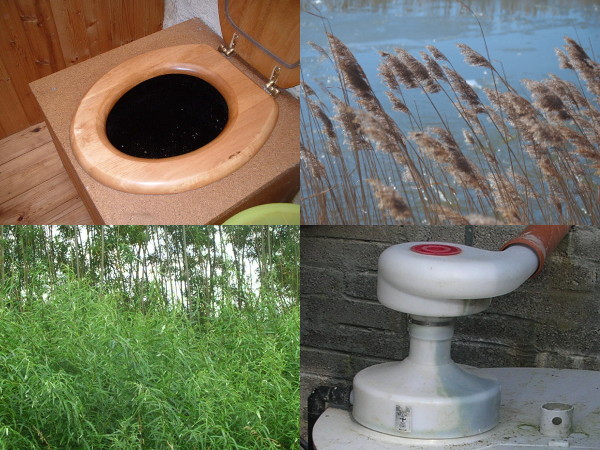
“Man is the only creature that seems to have the time and energy to pump all his sewage out to sea, and then go swimming in it.” – Miles Kington
Contents
What is low-impact sewage treatment?
It’s any kind of treatment of sewage that attempts to minimise pollution and the use of water, energy and synthetic chemicals, and to turn our waste into something useful (fertiliser / soil improver).
Sewage treatment is the process of settlement and aeration used to reduce (sometimes to a great extent) pollution of nearby rivers or coastal waters by our sewage effluent. This typically involves the addition of energy and chemicals and the generation of sludges (of low value or even a toxic nature).

Sewage is the term used to describe domestic and municipal effluent (sewerage, by contrast, is the infrastructure itself – the pipework, sewers etc.). Sewage is typically comprised of ‘black water’ (from toilets) and ‘grey water’ (from sinks, wash-basins, showers, baths, washing machines etc.). Industrial effluents may also be included within municipal sewage. In a ‘combined sewer’ the runoff from roads, yards and roof surfaces (or stormwater) is also connected to the foul sewers. Note that connection of stormwater to domestic septic tanks is generally prohibited or at least discouraged due to the excess loading on the treatment system during times of heavy rainfall.
In the context of designing and creating low-impact homes and lifestyles, sewage is a self-limiting term because it is by definition the combination of potentially useful elements into one gloriously unpleasant mess. Thus I will also mention dry toilets and source separation as part of the overall suite of solutions we can adopt.

So how do we find a way to move beyond our current modus operandi and treat sewage as a potential resource to be recycled instead of a waste to be disposed of? Generally when recycling, it is important to keep the different waste streams as separate and as clean as possible. This is no different with domestic wastewater, which has many useful constituent elements. Thus in addition to black water, grey water and stormwater, there are some additional terms that are gaining increasing use within wastewater engineering and design, as follows:
- Yellow water: urine – with or without small volumes of water used for urinal or urine-separation toilet flushing.
- Brown water: flush water leaving a faecal separation system such as an Aquatron unit.
- Humanure: contents of dry toilets or faecal separation systems.
- Humanure compost: compost made from humanure – ideally a clean, nutrient-rich humic material.
- SUDS: Sustainable Urban Drainage Systems (or SuDS – Sustainable Drainage Systems) are filtration and/or attenuation systems used as part of urban drainage or even for one-off roof surfaces, yards or car parks. They help balance the runoff volumes from rainfall events and filter the water prior to discharge back into streams or groundwater.

What are the benefits of low-impact sewage treatment?
We’ve learned to our cost that we can’t ignore water quality and still expect to have a healthy countryside and healthy lives. Thus, in the context of low-impact living, we need to diversify how we address the important issue of sanitation and to replace or back up the systems that rely on a ready supply of cheap fossil fuels for our electricity generation. proper sewage treatment is vital to the health of our wider environment.
One of the challenges with our current sewage treatment infrastructure is that it is heavily reliant upon fossil fuel inputs. The importance of removing sewage from our homes and treating it properly in on-site or municipal treatment systems can be easily overlooked until problems arise. For most households, power cuts are more likely to cause TV withdrawal distress than pollution anxiety. Yet without ongoing power supply to run blowers and pumps, our municipal sewage infrastructure will fail to work, and can discharge untreated sewage into our groundwater, rivers and seas. Many of the low-impact alternatives to conventional sewage treatment are more resilient to electricity shortages since they rely on gravity to move effluent through the system and to function. Examples include technologies such as reed beds, constructed wetlands, zero-discharge willow systems and willow filters as well as a range of source-separation technologies such as urine diversion toilets, faecal separator units and dry toilets. More details on these below.

Availability of clean water is one of the essential requirements for a healthy life. Directly related to this is the need for effective sanitation to keep our local groundwater and surface waters clean and healthy. We rely on a clean aquatic environment for drinking water supply, washing and cleaning, industry, agriculture, tourism and recreation. It’s also home to plants and animals in streams, rivers, lakes, ponds, wetlands, fens, bogs, estuaries and other coastal waters. These habitats in turn provide many and various ecosystem services such as food supply, water filtration and storage, flood prevention or amelioration etc.
Low-impact systems such as reed beds and constructed wetlands remove the need for electricity inputs to get the effluent clean, and thus achieve good effluent quality with a lower carbon footprint.

Willow systems are excellent for taking up phosphates and nitrates, thus reducing the need for chemical dosing of effluent for nutrient removal. Willows also absorb atmospheric carbon as they grow and can be used as a carbon-neutral fuel to offset heating oil purchases. These systems also provide habitat for flora and fauna and enhance biodiversity.
What can I do?
There are quite a number of low-impact sewage treatment or sanitation options available, although they pertain mostly to people with a bit of space for an on-site system. In urban areas, you’ll be restricted to mains sewers or possibly a compost toilet if you have enough space in your garden for utilising the rich soil that is the natural result. However, simply peeing on your compost heap (at night perhaps, for modesty) is an excellent way to recycle N, P and K back into your soil and keep it out of the local municipal treatment system. For readers not connected to a mains sewer there are more options, with a variety of price tags and carbon footprint budgets, as listed in the image below.

Septic tanks and percolation areas are the most common on-site system, and where good depths of unsaturated soil exists for filtering the effluent, these can be low-cost, low-carbon and effective. Don’t forget maintenance though, to keep the whole system running smoothly. Annual desludging is typically recommended, or at least checking the sludge depth annually and emptying as necessary.
Mechanical aeration units may be used where soils are inadequate for providing good filtration, but these typically require ongoing electricity inputs, which isn’t great from an ecological perspective, and the annual running costs for electricity alone can mount up. Media filter units using peat, rock wool or coconut fibre also need to be pump fed, so are still reliant on electricity supply, but they are considerably more energy-efficient than aeration units which need power 24/7. Also, the three media types listed above are either stripped from natural peatland habitats, require high-energy inputs or need to be shipped around the world to get here, which isn’t exactly low-impact either.

By contrast, reed bed systems are more eco-friendly since they can function effectively without any electricity inputs, where falls exist for gravity to do the work. Thus they have the advantage of being resilient to power shortages and having a zero-carbon footprint in their operation.
Willow systems are similar insofar as they are planted sewage treatment systems. They have the further advantage that as the willows grow they mop up atmospheric carbon, so they can be carbon negative over their lifetime, helping to provide fuel for the house as well as treating sewage. Zero-discharge willow systems can also have no discharge at all if they are carefully designed and built to evaporate all effluent entering them.

Dry toilets are the archetypal low-impact sanitation option. Properly designed and built compost toilets have no discharge to groundwater or surface water, use no water for flushing, sequester carbon naturally as compost, and return biomass and nutrients to the earth where they belong. Dry toilets are a form of source separation.
Other source separation technologies include urine-diverting toilets, urinals (if the urine is collected for use as a fertiliser – waterless urinals are particularly effective for this since the storage volume requirements are greatly reduced), faecal filter systems such as woodchip filters or faecal separators. These systems can combine the ease and familiarity of flush toilet infrastructure with the safe and effective recycling of biomass and nutrients to agriculture.

It’s difficult to say which system is best, since every site will have different characteristics and every person will have different priorities and preferences. What this introduction demonstrates is that there are many ways to protect our local environment from sewage pollution and gain additional benefits such as biomass and nutrient cycling. We can replace or augment our existing infrastructure with a more eco-friendly method in our own homes and hopefully this will see a gradual shift in society to more sustainable systems for general use.
Specialist(s)
Thanks to Feidhlim Harty of FH Wetland Systems for information and pics.
The specialist(s) below will respond to queries on this topic. Please comment in the box at the bottom of the page.

Féidhlim Harty is an environmental consultant and writer, and director of FH Wetland Systems Ltd., a company specialising in wetland and reed bed design, willow systems and habitat enhancement. He is the author of Septic Tank Options & Alternatives and Permaculture Guide to Reed Beds, both published by Permanent Publications.

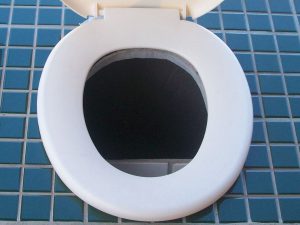
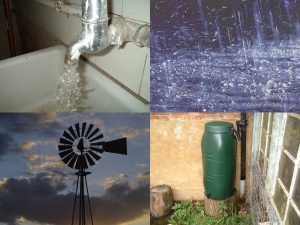
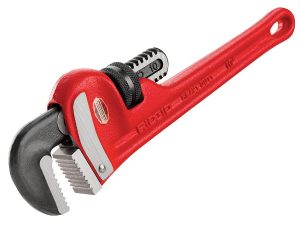
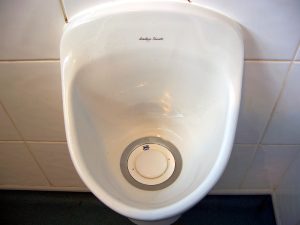
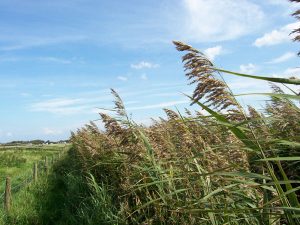
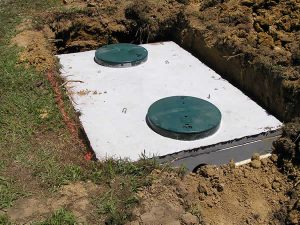


20 Comments
I’m currently researching composting toilets as I am creating a small self catering unit for holiday letting. I do have the option of having a conventional loo going to my septic tank but it would be awkward putting in a sewage pipe and, mainly, I don’t want visitors spoiling my septic tank by flushing things they shouldn’t flush. Composting toilet is therefore the obvious choice but, again, can I trust visitors to ‘get it right’? What I am writing to ask is if you have any experience of compost toilets that freeze their contents? It seems very uncomplicated for the novice user but is an expensive mistake to make if I discover my guests don’t want to use it because of icy draughts or nasty smells. I am struggling to find any reviews or customer feedback of such contraptions online, do you have any insights about these systems, please?
Hi Georgia, compost toilets can be tricky for public buildings due to the perception issues, but that said, they are the most eco-friendly way to go. I am not a fan of systems that require a lot of electricity to either dry, freeze or incinerate the contents. If you have a large bank of solar panels and have spare electricity then drying or freezing may be ok (I’ve no knowledge of the freezing ones!) but incinerator toilets are a disaster from a carbon footprint perspective. If you have the option to use an outdoor long-drop into a vented contained chamber that might be best (or integral long-drop built into the house). The less your guests see the contents the better, so indoor units that need regular emptying are not necessarily the most user friendly. Others may disagree, so if you find somebody with a second opinion and some good examples, then please consider those with an open mind too.
Hi I rececently bought land and have had it passed for a shally style unit cost Way to much to connect to a sewage line I have recently bought a onion to go in the ground and a gravel drain off which I had professonly done but now the environmental people want me to put in a read bed system as the town and land where my land is as a underground water reservoir now I have had qoates for this system and it is around£7000 for a new tank system electric pump and Reed bed and installation which I can’t afford is there a possibility that I could use my 1500 litre tank(onion ) and gravity feed it to a reed bed could you give me some information on what the best way around this as I said I have bought all the equipment for soakaway system which I have been told is not gd enough cheers Darren
Hi Darren, On first read, I can’t see why you cannot use the existing system as your settlement stage, and then go to a reed bed from there, and reroute the water back into the existing leach field. It’s pretty specific, so can you send me a map of your site and description of the existing system and a copy of the letter requiring you to upgrade it? My email is [email protected] and although I will charge for consultancy work, I’d be happy to look over the file and let you know what might be involved free of charge. Hope that helps, Féidhlim
How much does a sustainable sewage treatment alternative usually cost in an urban setting.
Hi Fiedhlim, I was hoping you were able to help me with a sewage treatment issue. I am installing a shower, toilet, wash hand basin and kitchen sink in a small timber building near two cabins without mains electricity I have in a wood clearing. I was hoping to use a soakaway for the grey water as the toilet is a cassette type. having read your terrific research and information which I must congratulate you on, a reed bed or willow bed seem to be more suitable for my eco friendly project. My question is concerning the size and construction requirements of the reed bed. The maximum number of people likely to share this facility is 7 over a period of 7 days. The ground is fairly level with the structure raised off the ground by approx 30cm.
Thanks Nige, If you look at https://www.lowimpact.org/lowimpact-topic/reed-beds/ and multiply the figures by 0.6 (or a 40% reduction to allow for grey water only) then you’ll have your reed bed or wetland sizes. The easiest way to size willow systems is to use a standard percolation area sizing (In Ireland it’s 18m per person in a 500mm wide trench for septic tank effluent; or smaller if you have a reed bed first, size dependent on the infiltration rate in the soil). Then use a modified piping layout to avoid the pipes blocking, and plant with willows. See https://www.wetlandsystems.ie/Images/cleaning_effluent_pm.pdf for details of the piping needed. All the best with it, Féidhlim
Hi..I’m looking into the best way to manage a compost toilet system, …a borehole is currently being dug on a parcel of an acre of land and I want to know I’m bit contaminating it..also I usually use my humanure..but I’m no expert
Many thanks
SuBear
SuBear – from Feidhlim: Vis a vis the dry toilet; I’d say follow local guidance relating to leach field set up (percolation area/infiltration area) for minimum separation distances to water courses, groundwater etc. Log on to https://www.facebook.com/groups/2468703006759330 or https://www.lowimpact.org/lowimpact-topic/compost-toilets/ for further leads.
Hello
Please could you tell me your thoughts about bio-digesters, used on a large scale for towns and cities.
Many thanks for your time.
Mandy
Hi Mandy, biodigesters aren’t something I know a lot about, however some form of biodigestion is often used for city sewage systems. In Cork city for example I’ve heard that the sewage treatment system supplies the gas from this process to provide the sludge drying process. Landfill gas can also be used, and again in Cork there is a lot of electricity supplied to the city from the landfill site gas collection.
I’ve seen examples of home biodigestion units for domestic food waste, but I’m not sure how well these work in a cool climate with modest waste inputs. They may be absolutely fine, but those two factors are ones I’ve heard to be limitations for domestic scale biodigestion. A friend of mine has a domestic unit and reports 20mins of gas per day for his cooker.
I’d say keep asking and keep searching online. I’d be very grateful if you’d post your findings here for future reference for anybody else with a similar query.
Thanks
Féidhlim
Hello there, wondering if you received my query, asking what system might be best for a small town by the Cornish coast. This is a fictional scenario within a story about change, one aim of which is to encourage interest and discussion about large scale solutions.
many thanks
Mandy
Hello,
we had a reed bed system attached to a septic tank some 15 years ago. It occupies a substantial trench running some 80+ metres.
sadly the system has now choked and is no longer fit for purpose.
i am looking for a solution and have considered converting the existing reed bed into a willow bed.
is thus something that could be easily achieved?
many thanks.
Hi Mandy, I don’t recall seeing your enquiry at all. If it’s not way too late for your purposes, could you email me directly on [email protected] or post again here. Thanks, Féidhlim
Hi Paul,
It will depend on whether it is planning approved or ad hoc. If the former, then maintaining it is probably required as per your original planning permission. If the latter then you are at more liberty to change it. You could convert to a willow bed; but typically willow systems are top-dosed with liquid spread across the length some way or another – rather than inlet fed and then leading to the outlet. The inlet/outlet flowpath gives nutrient preference to the willows at the inlet section, and the outlet end of the system runs the risk of being nutrient impoverished.
One option is to do as you say, and simply plant with cultivated hybrid biomass willows; cutting back for firewood every 5-7 years or so (taking great care to avoid getting contaminated by sewage bacteria as you work!). The other is to clean out the reed bed (is it a horizontal flow gravel reed bed or soil based constructed wetland system?) and start again.
Hope that helps,
Féidhlim
Dear Feidhlim
Many thanks for replying to my previous questions.
I enjoyed reading your informative article above, yet am still left with some questions, the main one being about your thoughts on Hydrothermal Carbonization. This tech won the Nobel prize in the early 1900’s but was shelved due to the two world wars. Somax in USA have refined the process (the CEO Dan Spracklin is very helpful,) and HTC is being trialled in the UK on the Scottish border. It produces enough electricity to run the process and more which can be used locally. It breaks down forever chemicals and micro plastics and can produce a variety of soil improvers/fertilisers.
Not every one has land for more simple solutions, this is my main worry. What about people in flats in cities?
What happens to reed beds etc when it freezes?
What happens to the ‘sludge’ from sceptic tanks?
And do microplastics and forever chemicals pass through plant based systems and go into water courses?
This is probably not the kind of questioning you would like but these are questions that need answering.
Warm regards
Mandy Burton
It is costly to install, which is one of the main snags, but for large scale municipal waste it seems to me to be a good option.
Hello feidhlim
thanks for your informative reply, yes it’s very helpful.
It is a gravel construction operating on a horizontal flow. The trouble is that it’s not flowing currently, my thought with the willow is that it maybe has the potential to offer a more reliable drainage through the root systems than the reeds (which are also poorly established).
we were granted a license to discharge at the time of construction, it now appears that the pressure is to replace the existing system with a package treatment works. I am keen to avoid this if possible and find a more natural solution.
As it occupies a large space I feel it ought to be possible to redesign the existing system to perform more reliably and willow is something that grows well around here.
thanks again for your guidance,
Paul.
Hi Mandy, I’d not heard of the HTC process. I have no doubt that there are more effective methods than our common ones currently in operation at present.
In terms of cities, source separation technologies such as Aquatron and urine diversion can be retrofitted if our collective desire is to have clean water and fertile fields rather than polluted water and agrochemicals. Best not use reed beds at all if we can utilise all of the nutrients and biomass in other more productive ways.
Freezing in reed beds and constructed wetlands has not been shown to be a problem in latitudes much colder than the British Isles.
Septic tank sludges can be composted; or routed through sludge drying reed bed systems to consolidate the waste (and ultimately composted or used as a base for tree growing)
Some microplastics will be taken up by the reed bed or wetland; but I’m not sure of the percentages. Nor am I sure what happens to them within the biological system – and whether they are taken up by insects and other fauna in the system. Best step is to gradually phase out microplastics for clothing for a start and then explore ways to avoid microplastics from vehicles. These are the biggest two sources as I understand it.
In terms of forever chemicals, I’ve not done the research on those, so I don’t know how they behave in reed bed systems. Many toxic chemicals are either reduced or held within constructed wetlands though. I would prefer to see these banned at source.
Come on my workshops!! All questions that need a much longer answer 🙂 https://www.wetlandsystems.ie/Next%20Workshop.html
Hi Paul,
Is the system leaking at present?
What is the reason for replacing it?
Willow may well be a good option, if what you want is cleaner water and greater environmental protection. If it’s leaking anyway; since the willows will seek out the moist soil and nutrient rich water.
🙂
F
Hi Feidhlim,
No I don’t believe the septic tank to be leaking, we’ve had it de sludged annually and whilst it is an old construction it appears in good health and doing the job of separating out the solids.
one of our neighbours is currently selling a property and a surveyor working on his behalf condemned the system (without a thorough explanation, only that it would no longer be compliant with the post 2020 regulations).
I’m of the opinion that if we can solve the choking problem and clean up the fouling issue and carry on with a natural system. That would be far better than installing a package treatment system and doing away with the septic tank, as the surveyor has prescribed.
Even if this involved some re engineering of the outflow/landscaping and introducing new plants to treat the sewage and effectively carry on with a natural filtration system.
Thanks again for you input,
kind regards Paul.